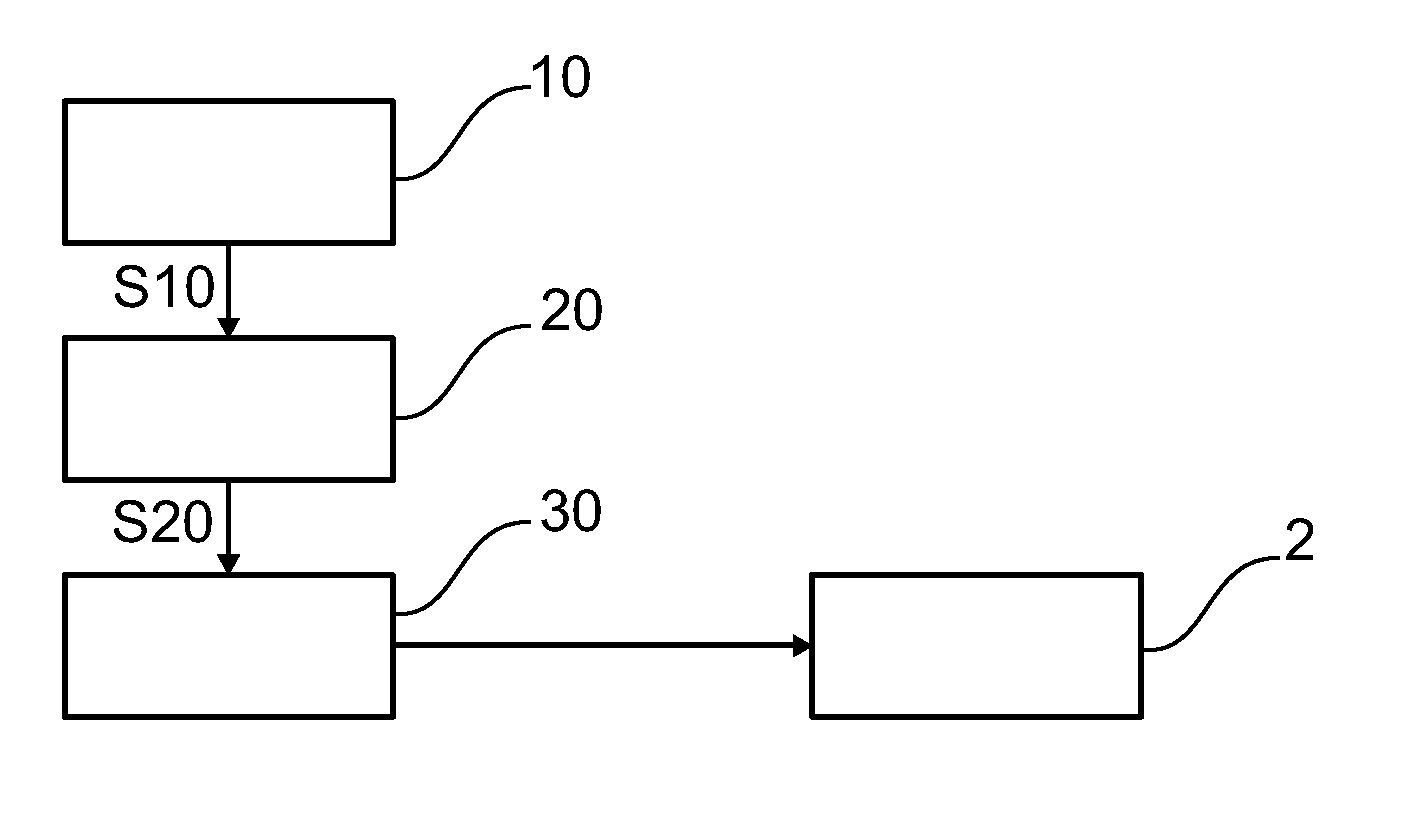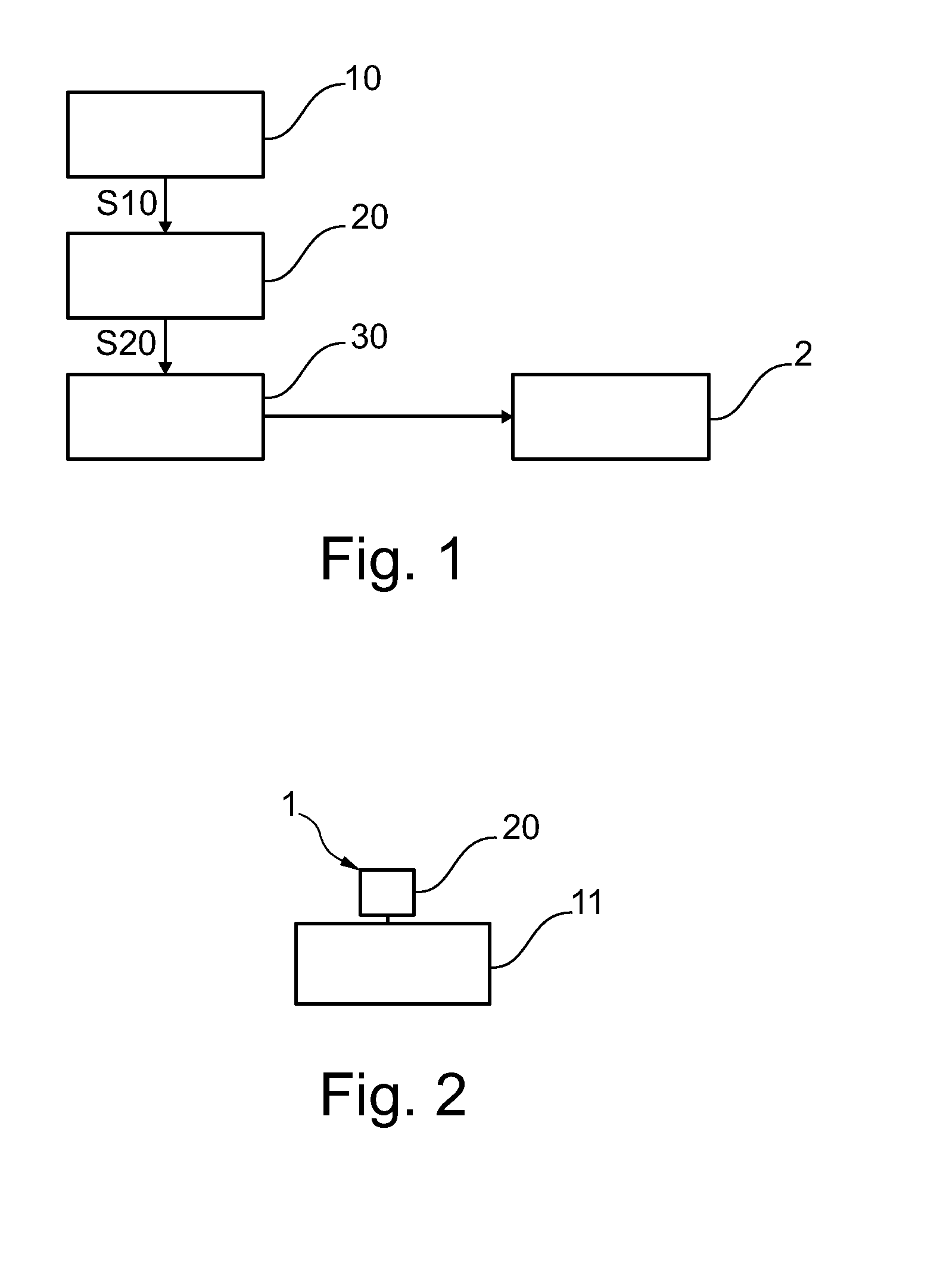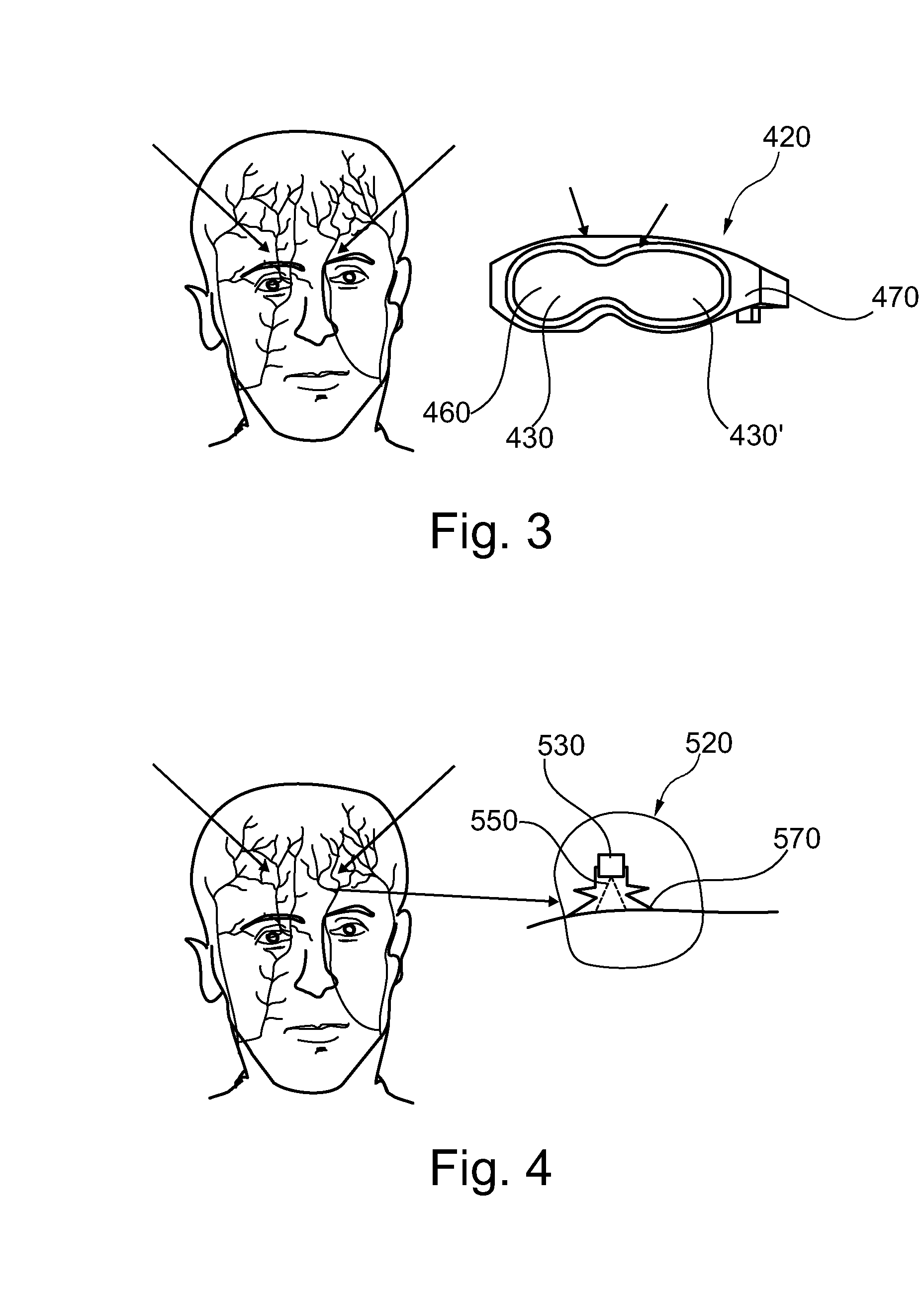Cardiopulmonary resuscitation apparatus comprising a physiological sensor
- Summary
- Abstract
- Description
- Claims
- Application Information
AI Technical Summary
Benefits of technology
Problems solved by technology
Method used
Image
Examples
Embodiment Construction
[0032]FIG. 1 shows a schematic block diagram of a sensor apparatus for an automated cardio pulmonary resuscitation apparatus according to a first aspect of the invention.
[0033]The sensor apparatus 1 can be used with an automated CPR device 2. The sensor apparatus 1 comprises a camera element 10 adapted to detect PPG signals S10. The camera element 10 may be used to determine variations in skin color or temperature on or near the body surface on selected areas of the body. One preferred area to be monitored is the face, where relevant PGP signals S10 representative of the blood flow to the brain may be sensed. Among others, measurement of blood flow or blood volume in arteries connected to the arteries responsible for brain perfusion is desirable. Some of these arteries are located in the facial area. Relevant arteries connected to the internal carotid artery are the supratrochlear artery, supraorbital artery, dorsal nasal artery, . . . ), arteries around the nose nostrils and possib...
PUM
 Login to View More
Login to View More Abstract
Description
Claims
Application Information
 Login to View More
Login to View More - R&D
- Intellectual Property
- Life Sciences
- Materials
- Tech Scout
- Unparalleled Data Quality
- Higher Quality Content
- 60% Fewer Hallucinations
Browse by: Latest US Patents, China's latest patents, Technical Efficacy Thesaurus, Application Domain, Technology Topic, Popular Technical Reports.
© 2025 PatSnap. All rights reserved.Legal|Privacy policy|Modern Slavery Act Transparency Statement|Sitemap|About US| Contact US: help@patsnap.com



